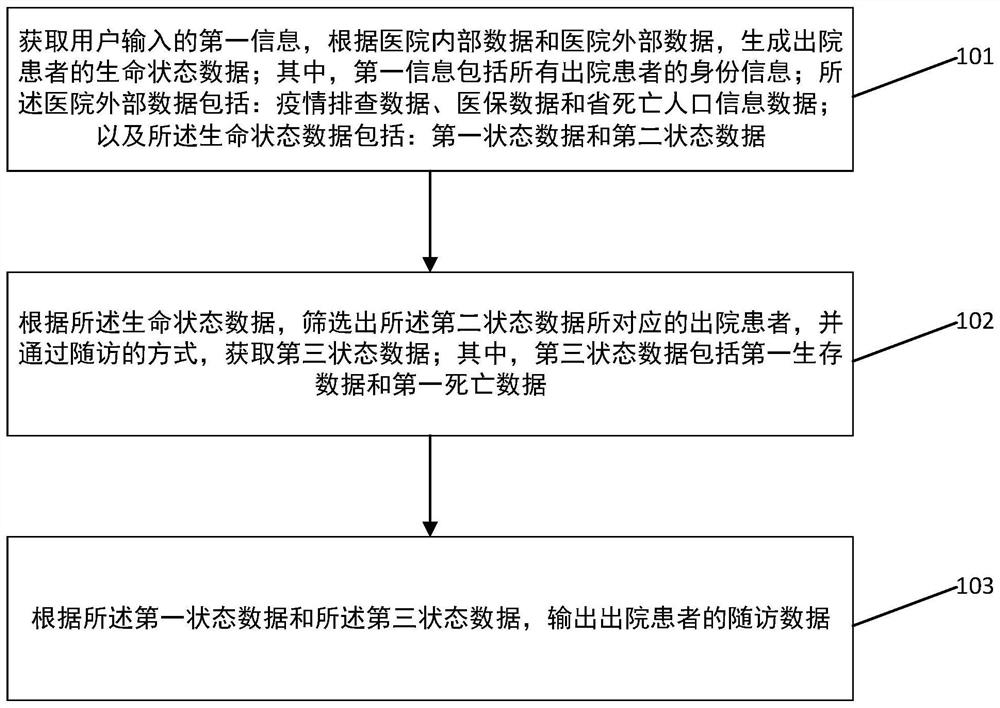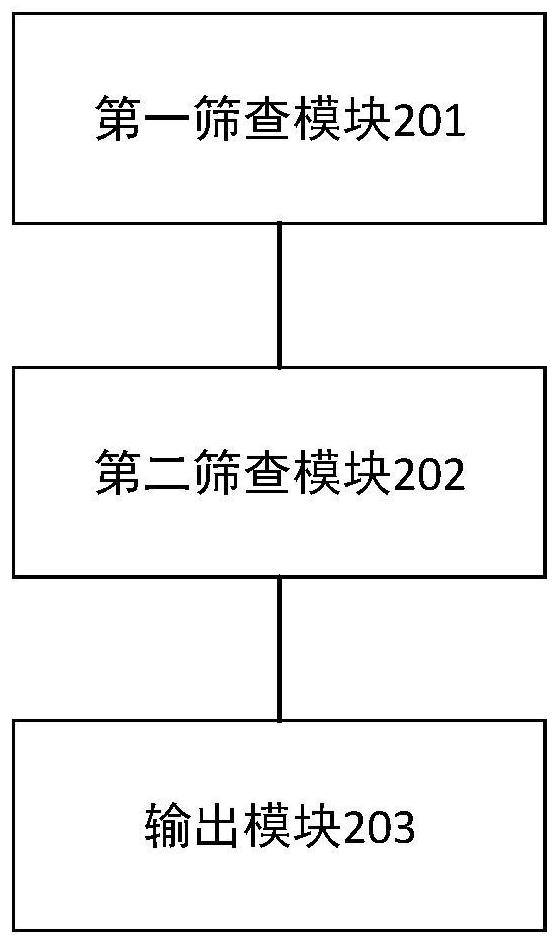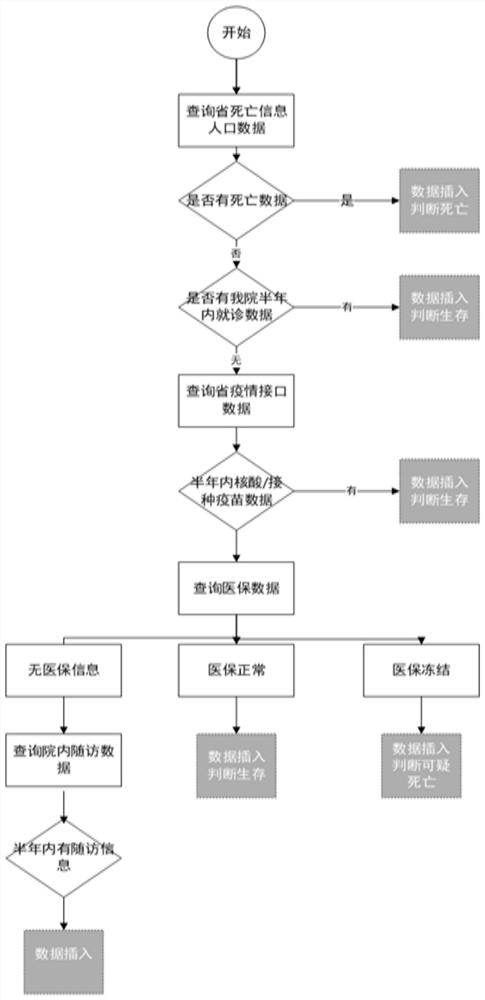Hospital follow-up visit method and device based on multi-source data and terminal equipment
A multi-source data and data technology, applied in the field of artificial intelligence, can solve problems such as the unusability of large amounts of data, the reduction of data value, and the inability to obtain effective data in a timely manner.
- Summary
- Abstract
- Description
- Claims
- Application Information
AI Technical Summary
Problems solved by technology
Method used
Image
Examples
Embodiment 1
[0044] see figure 1 , figure 1 is a schematic flowchart of a method X provided by an embodiment of the present invention, such as figure 1 As shown, this embodiment includes steps 101 to 103, and each step is as follows:
[0045] Step 101: Obtain the first information input by the user, and generate the patient's life status data outside the hospital according to the internal data of the hospital and the external data of the hospital; wherein, the first information includes the identity information of all patients; the external data of the hospital includes: epidemic investigation data , medical insurance data and provincial death population information data; and the life state data includes: first state data and second state data.
[0046] In this embodiment, step 101 is specifically: according to the patient's ID number input by the staff, compare and query the pre-stored hospital internal data and hospital external data, and the hospital internal data and hospital externa...
Embodiment 2
[0059] see figure 2 , figure 2 It is a schematic structural diagram of a hospital follow-up device based on multi-source data provided by an embodiment of the present invention, including: a first screening module 201, a second screening module 202, and an output module 203;
[0060] The first screening module 201 is used to obtain the first information input by the user, and generate the patient's life status data outside the hospital according to the hospital internal data and the hospital external data; wherein, the first information includes the identity information of all patients; the The external data of the hospital includes: epidemic investigation data, medical insurance data and provincial death population information data; and the life state data includes: first state data and second state data;
[0061] The second screening module 202 is configured to screen out the patients corresponding to the second status data according to the vital status data, and obtain t...
Embodiment 3
[0079] see Figure 4 , Figure 4 It is a schematic structural diagram of a terminal device provided by an embodiment of the present invention.
[0080] A terminal device of this embodiment includes: a processor 401 , a memory 402 , and a computer program stored in the memory 402 and executable on the processor 401 . When the processor 401 executes the computer program, it implements the steps of the above-mentioned multi-source data-based hospital follow-up methods in the embodiments, for example, figure 1 All steps shown for a multi-source data-based approach to hospital follow-up. Alternatively, when the processor executes the computer program, the functions of each module in the foregoing device embodiments are implemented, for example: figure 2 All modules of the multi-source data-based hospital follow-up device shown.
[0081] In addition, an embodiment of the present invention further provides a computer-readable storage medium, where the computer-readable storage m...
PUM
 Login to View More
Login to View More Abstract
Description
Claims
Application Information
 Login to View More
Login to View More - R&D
- Intellectual Property
- Life Sciences
- Materials
- Tech Scout
- Unparalleled Data Quality
- Higher Quality Content
- 60% Fewer Hallucinations
Browse by: Latest US Patents, China's latest patents, Technical Efficacy Thesaurus, Application Domain, Technology Topic, Popular Technical Reports.
© 2025 PatSnap. All rights reserved.Legal|Privacy policy|Modern Slavery Act Transparency Statement|Sitemap|About US| Contact US: help@patsnap.com



